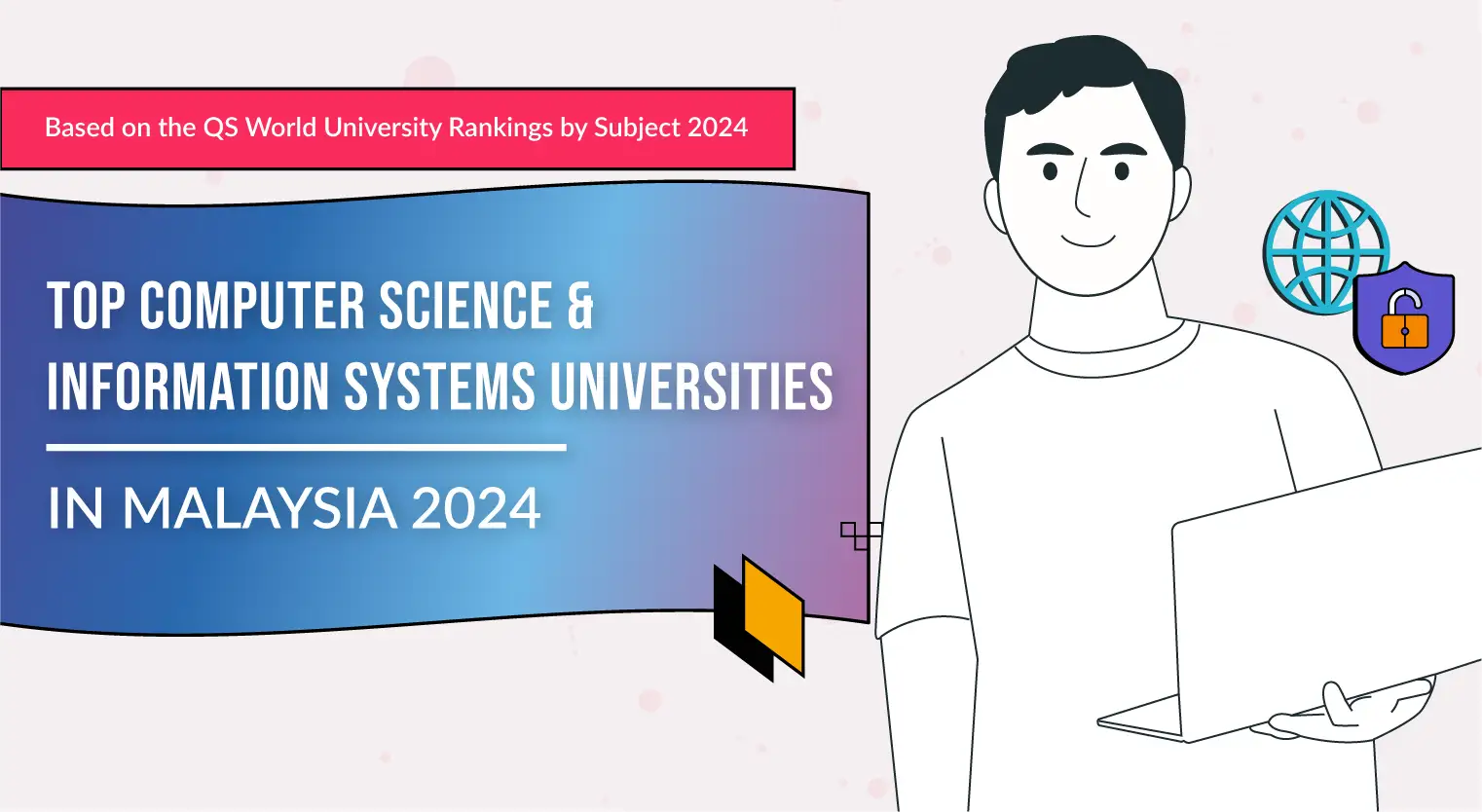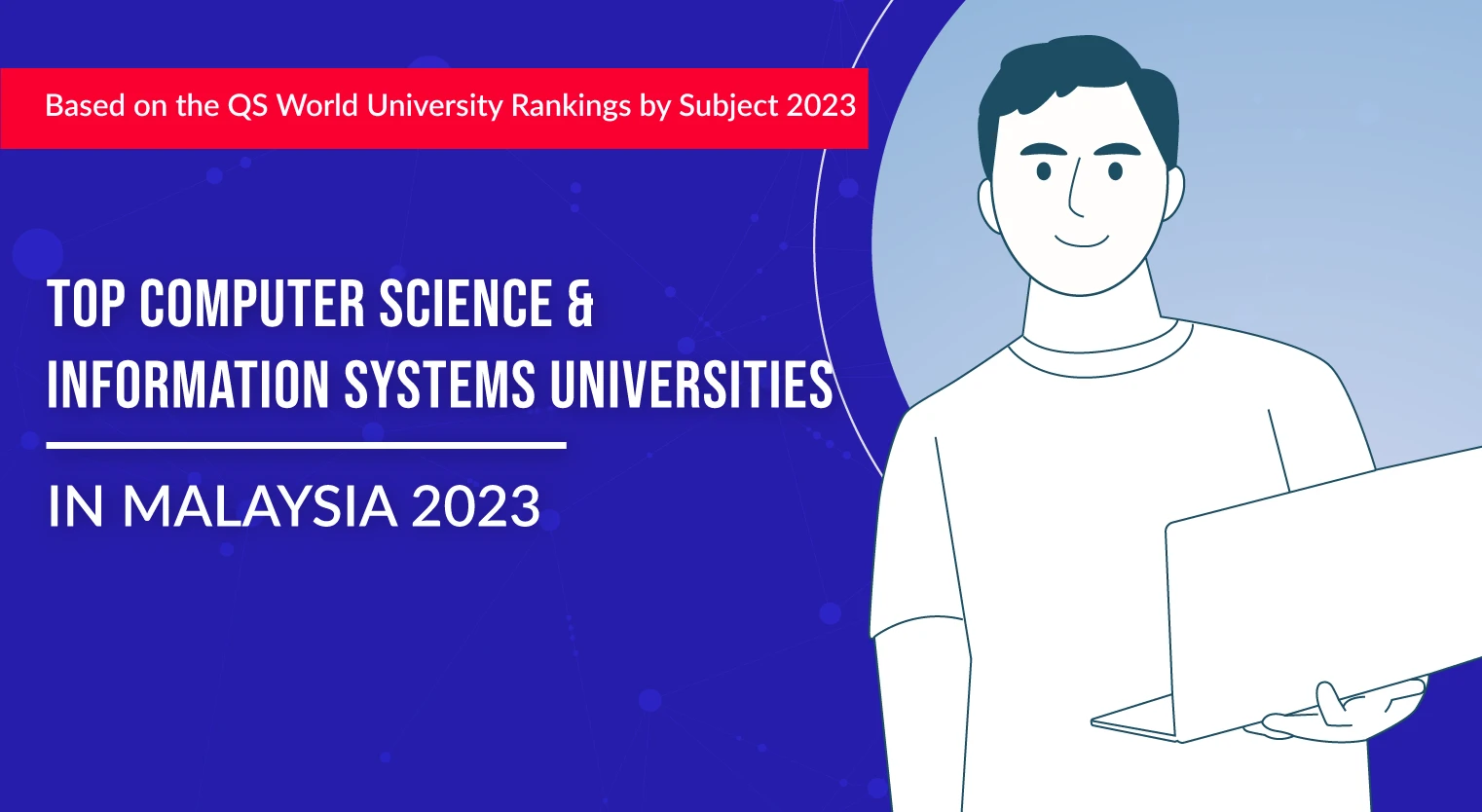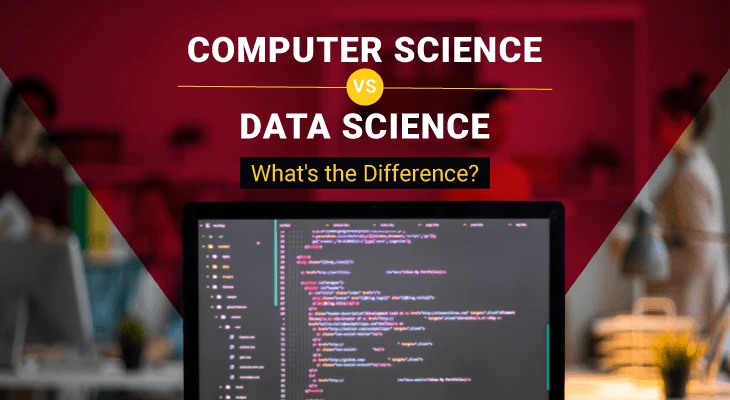Computer Science vs Information Technology: What’s the Difference?
While often mistaken for one another, they are not the same thing. Here are some of the ways computer science and information technology differ.
Updated 14 May 2022
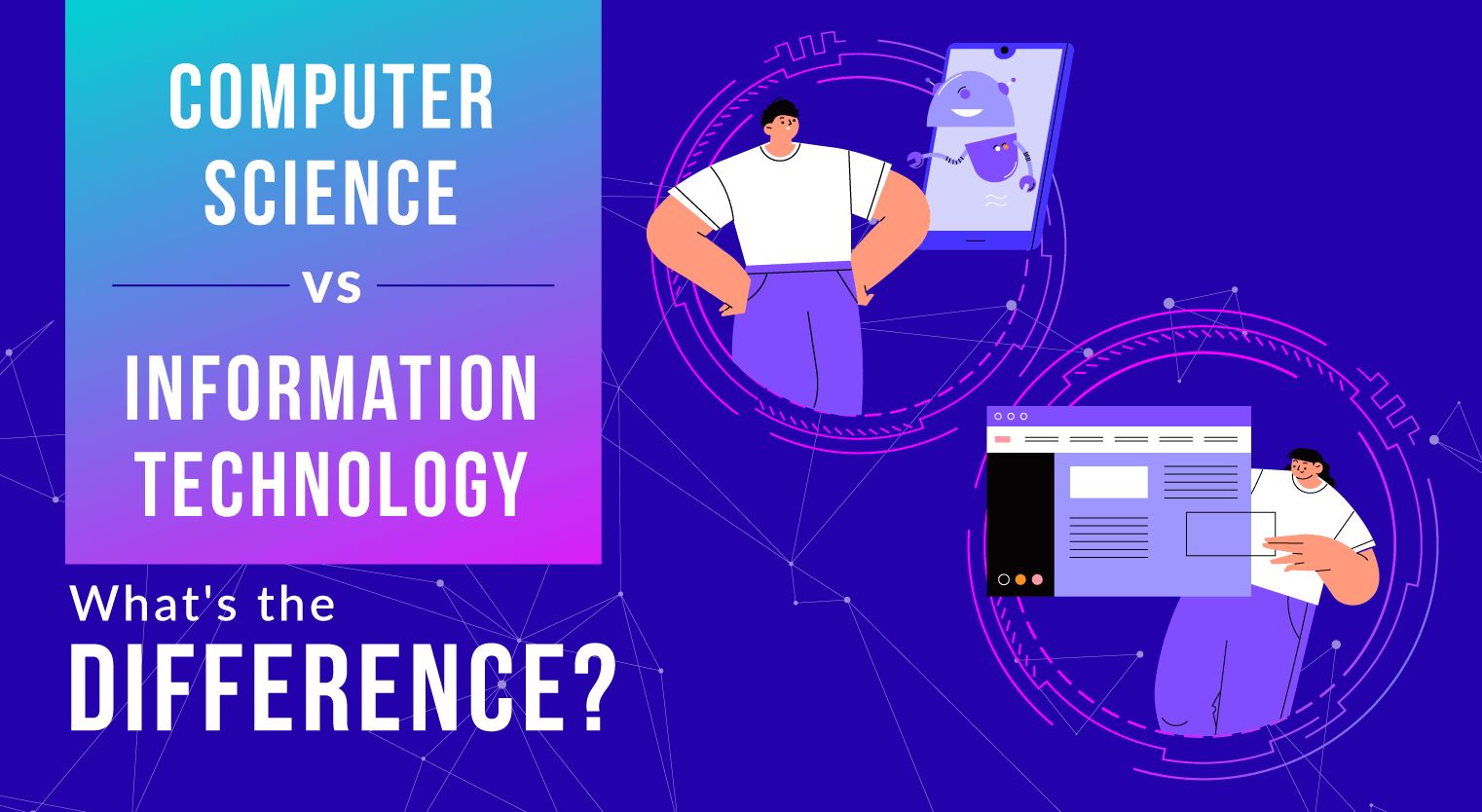
Struggling to tell the difference between computer science and information technology? You’re not the only one.
As an academic qualification, computer science and information technology are in fact two different study fields. And while some aspects may overlap, the difference is notable enough to lead to different outcomes.
Here are 5 ways computer science and information technology (IT) differ.
#1. Computer science is about developing new software and programs while IT is about managing computer systems
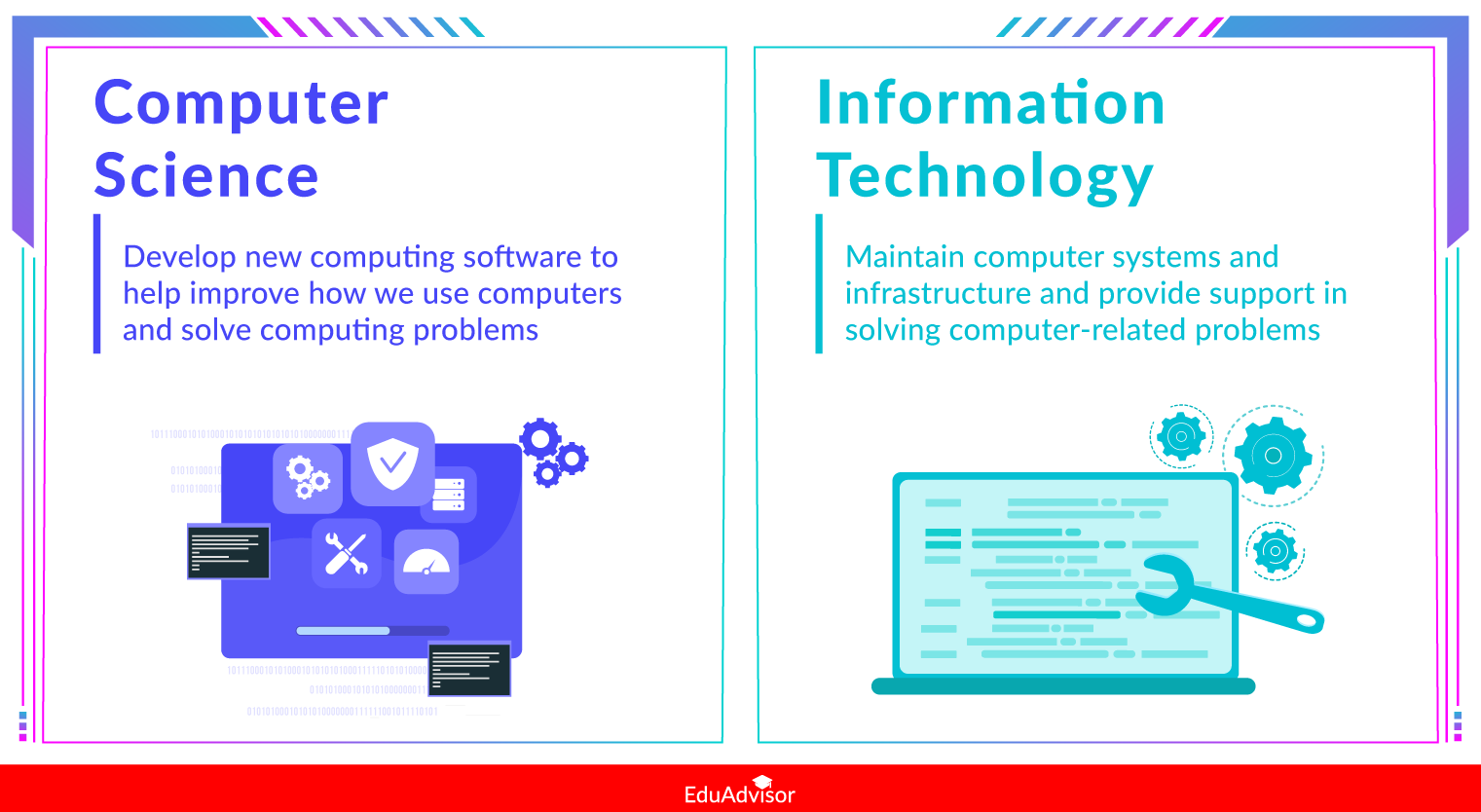
Computer science is primarily concerned with the design, development and implementation of software and programs to help improve how we use computers and solve computing problems. For instance, the creation of robots as intelligent aides and the advancements in speech recognition technology (think Siri, Google Assistant and Alexa) are largely the work of computer science.
Information technology, on the other hand, is more concerned with understanding computer systems and software and using that understanding to maintain computer systems and infrastructure and provide support in solving computer-related problems. The responsibilities of IT specialists include installing networks and communication tools and implementing security measures.
In short, computer science is mainly focused on innovation and development while information technology is primarily about the maintenance, management and application of existing computer systems.
#2. Computer science has a higher entry requirement compared to IT
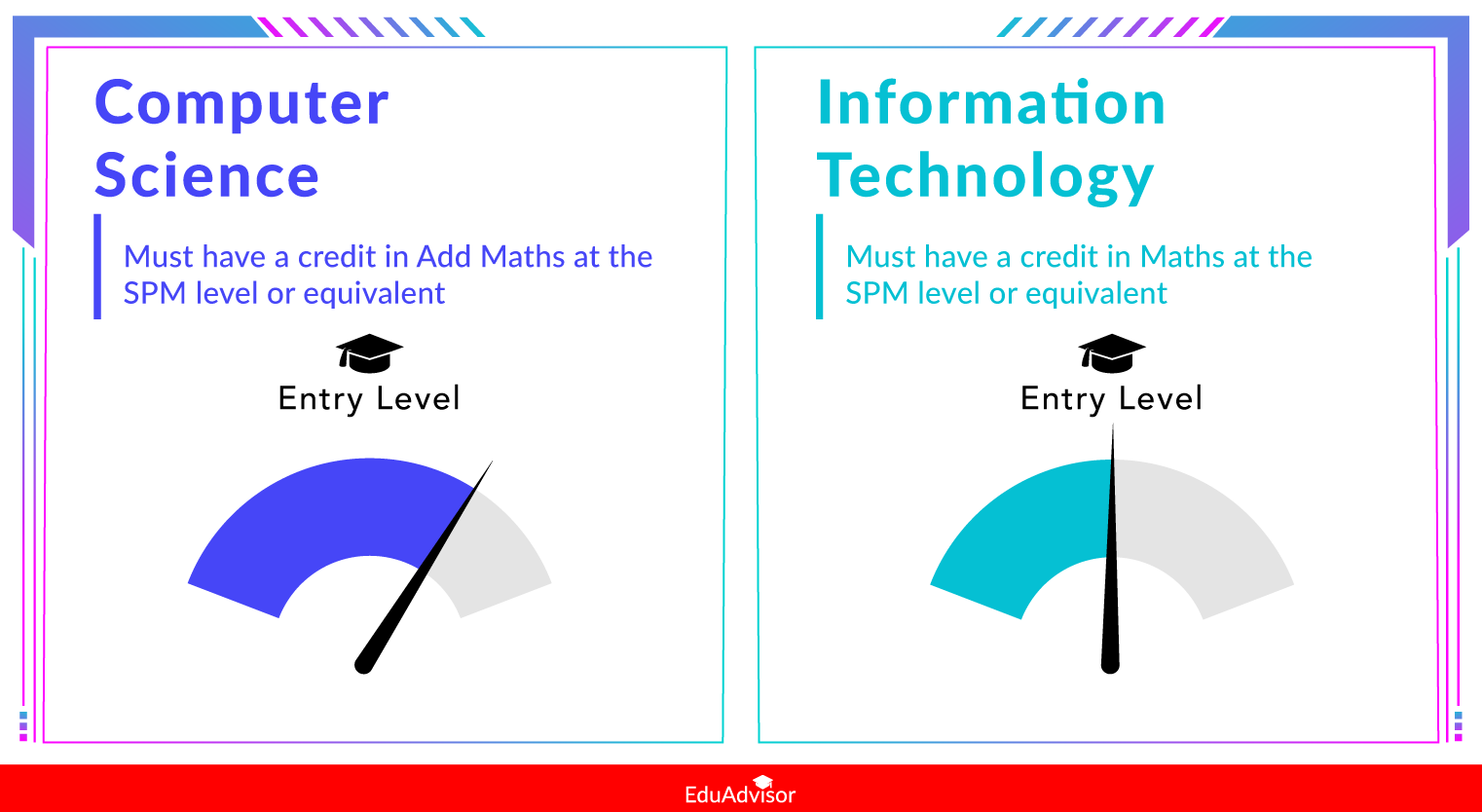
In Malaysia, both computer science and IT programmes have pretty similar minimum entry requirements but there is one notable difference.
To qualify for a degree in computer science, you must have a credit in Additional Mathematics at the SPM level or equivalent. If you did not achieve this, you may still pursue a degree in computer science provided that you complete a diploma that includes a Mathematics module that’s equivalent to SPM Additional Mathematics.
On the contrary, a degree in IT only requires you to have a credit in Mathematics at SPM.
If you intend to pursue a diploma, the entry requirements are the same for both programmes — 3 credits including Mathematics at SPM level.
PRO TIP
Not sure if you qualify to study computing? Click here to speak to our education advisors.
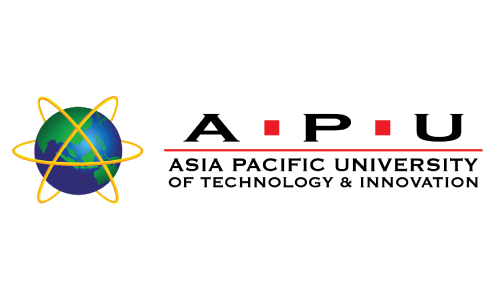
Asia Pacific University of Technology & Innovation (APU)
BSc (Hons) in Computer Science
✓Dual-award degree – one from De Montfort University (UK) and one from APU
#3. Both programmes have a different curriculum while sharing some similar modules
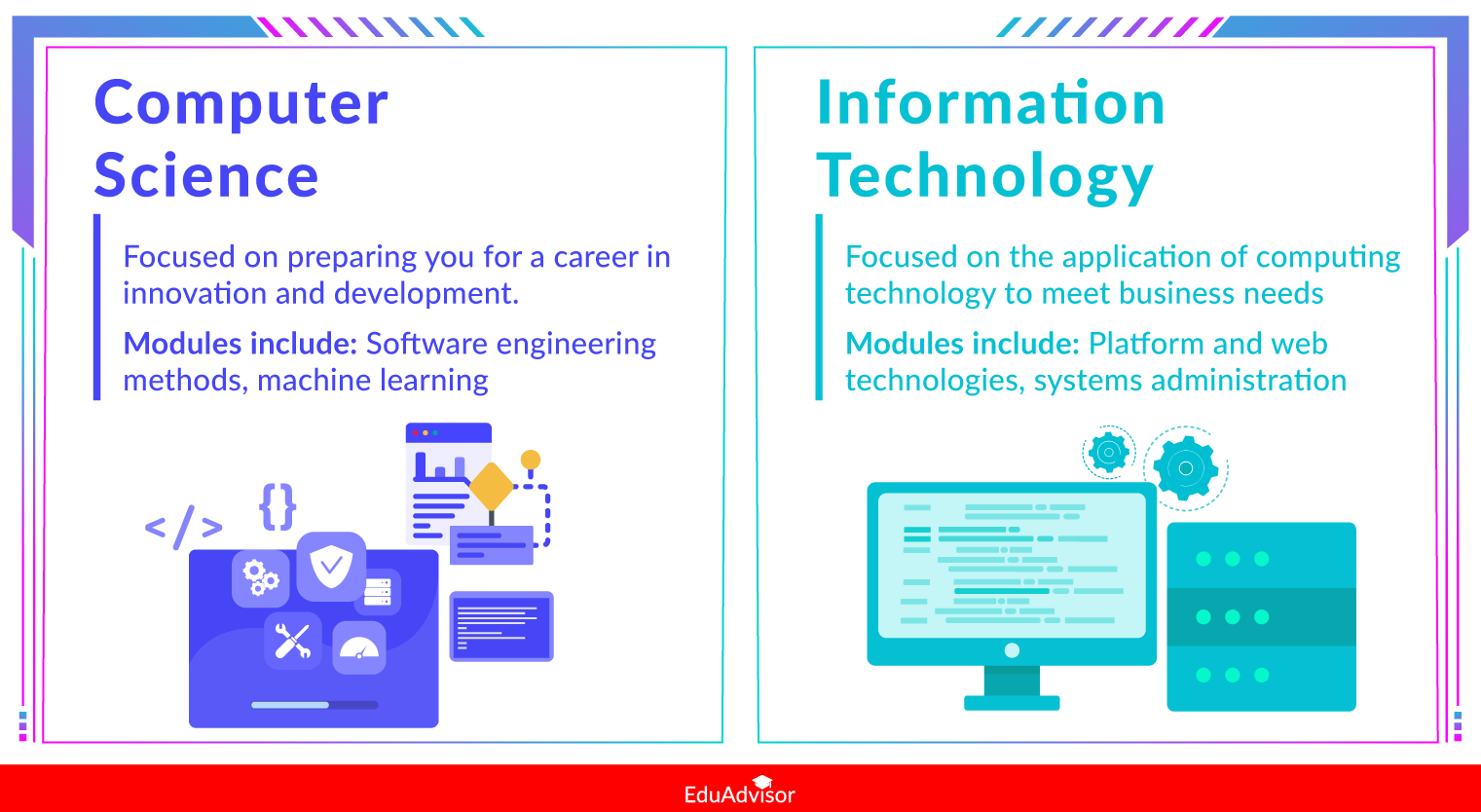
Since both computer science and IT are part of the computing umbrella, they share similar modules. Information security, data modelling and discrete structures are some topics that are covered in both computer science and IT courses.
However, the level of detail that you'll go into may differ from module to module. A computer science programme will be more focused on preparing you for a career in innovation and development. As such, you will be learning topics like algorithms and programming fundamentals in greater depth compared to an IT student who may only cover the basics.
You'll also approach the same subject from a different perspective. Take operating systems, for example. A computer science student will concentrate on the principles and design of operating systems. Meanwhile, because the emphasis in IT is on the application of technology, an IT student will concentrate on the setup and use of operating systems.
Finally, there are topics that are unique to the programme. The computer science curriculum has subjects such as software engineering methods and machine learning, whereas the IT curriculum centres on platform and web technologies and systems administration.
Apply for university with EduAdvisor
Secure scholarships and more when you apply to any of our 100+ partner universities.
Start now#4. Both have different fields of specialisation

Another notable difference between the two fields is the type of specialisations you can pursue.
If you’re looking for a field that experiments with emerging tech like artificial intelligence and machine learning, then computer science is the way to go. Some specialisations in this field include artificial intelligence, cybersecurity and data science.
Meanwhile, specialisations such as network computing, Internet of Things (IoT), cloud computing and business intelligence are more commonly offered in IT due to its emphasis on meeting business needs.
These specialisations are not exclusive to their respective fields. However, some universities do keep them separate. So if you already have your eyes set on a certain specialisation, then make sure you’re choosing the right programme.

#5. Both fields have different career prospects
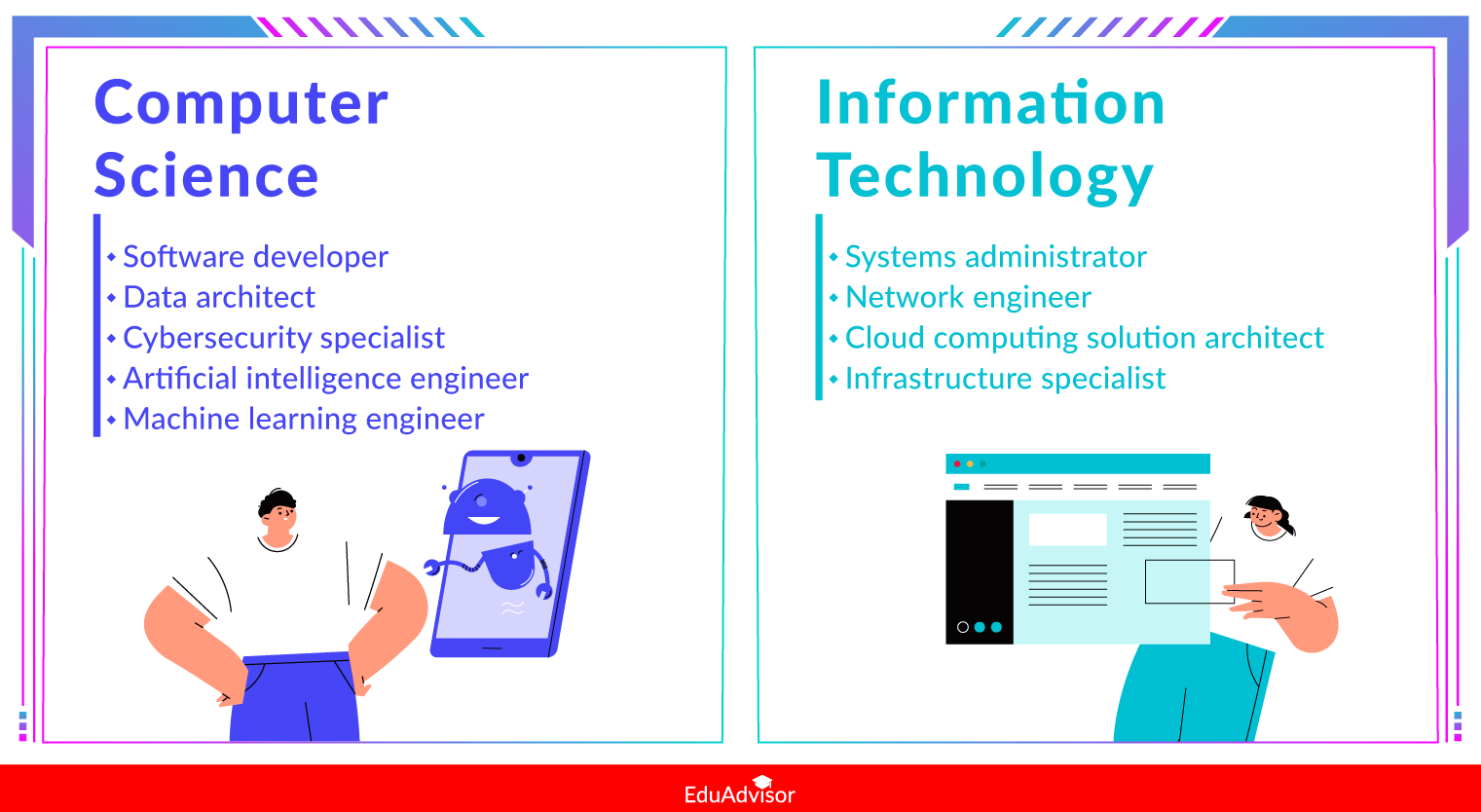
Careers in computer science often revolve around devising new ways to use computers and developing new ways to solve computing problems. As such, computer science graduates can be found in roles such as software developer, data architect, cybersecurity specialist, artificial intelligence engineer and machine learning engineer.
On the other hand, careers in information technology will often revolve around the management and maintenance of systems and programs to meet the needs of the business. By pursuing a qualification in IT, roles that will be open to you include systems administrator, network engineer, cloud computing solution architect and infrastructure specialist.
It is important to note that choosing to pursue one field won’t limit you to only careers in that field. Computing and tech is a vast and interconnected industry and you can still find work that’s not directly related to your specialised field of study. As long as you have the right skill set, you can still jump from one field to another.
Although often mistaken for one another, computer science and information technology are in fact two different fields. The distinctions may be slight but it’s still important that you know them as this can save you from making a mistake that could affect your future goals.




